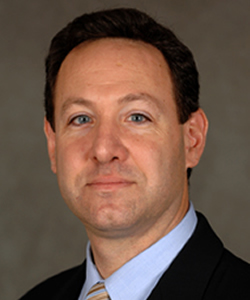On the Margins: Conversos and the Question of Jewish Belonging Throughout History

Download Sources
Part of the series, The Space in Between: Thresholds and Borders in Jewish Life and Thought
With Dr. Jonathan Ray, Samuel Eig Associate Professor of Jewish Studies, Georgetown University, and JTS Alumnus
Jewish law provides relatively clear standards for who is, and who is not, a member of Jewish society. But popular Jewish acceptance – or rejection – of certain people as “Jews” has often run counter to these legal definitions. From medieval Spain to the Ottoman Empire to modern day America and the State of Israel, conversion out of, or into, the Jewish community has raised tensions over who is (and isn’t) considered Jewish. We discuss the question of Jewish belonging throughout history by looking at groups of converts and the liminal space they inhabited on the margins of the Jewish world.
Lecture Notes
Dr. Jonathan Ray introduced the concept of anussim, Jews who were forced to convert but would still be considered Jewish. He looked at two historical periods in which issues around conversion and the standing of specific converso communities within the Jewish community, conversos in Christian Spain and Portugal and the dönme in Muslim countries. The questions of identity and community acceptance had ramifications around who was able to marry others within the community, could they be part of food/wine production, and how welcomed they were into the Jewish community.
- Rabbis tried to understand if anussim had maintained a private Jewish practice, despite the need to have a public Christian identity
- In communities where there were both Ashkenazi and Sephardi Jewish communities, conversos seemed to be more comfortable with Sephardi Jews rather than Jews generally; the ethnic connection was more important to them than the religious connection. Dr. Ray said in some cases they would prefer to marry a Catholic from Spain than a Jew from Eastern Europe.
- The dönme are followers of Sabbatei Zevi who were forced to convert in the Ottoman Empire.
- This question of who is defined as a Jew and how they could view assert their place in the Jewish community has huge implications on contemporary Jewish identity questions between denominations and in the state of Israel.
- Another piece that came up is the interplay of rabbinic authority, halakha and the community in making decisions around who is “in” and who is “out.” The rabbinic authority has to represent the community and have community “buy-in” in order to maintain weight. In addition, in certain circumstances the community would ignore halakha making it somewhat irrelevant (eg. The extent to which they abided by the status of mamzeirut and the halakhot surrounding a mamzer).
- Rabbi Andelman noted in the conclusion that while in some of our sessions the notion of both/and rather than either/or is celebratory, here, this liminal space of identity and who is a Jew, can be quite painful for those that are not recognized by everyone as being Jewish.
About the Series
We are living in an undefined time: our daily existence is no longer dominated by the pandemic, yet neither have we settled into a new normal. This sense of being in transition—neither here nor there— can feel destabilizing; but is the time in between really temporary, or are we always living in between moments, identities, and phases of life?
In this series, JTS scholars will delve into the idea of liminality—the time or space in between—which we encounter often in Jewish ritual, identity, law, and life. Join us to consider what these many manifestations of “in-between-ness” can teach us about ourselves and about Judaism, and to explore how we might find strength and meaning in an orientation not of “either/or” but of “both/and.”
We will explore themes of borders, thresholds and transitions as they pertain to the story of Creation, gender, conversion, birth and death, the duality of living as a Jew in America, and more.
SPONSOR A SESSION
At JTS, we are committed to providing the Jewish community with outstanding classes in Judaic studies. We hope you will partner with us so that we can continue to do so. Did you know that you can sponsor a learning session to honor a loved one, celebrate an occasion, or commemorate a yahrzeit? You can find sponsorship information here.



